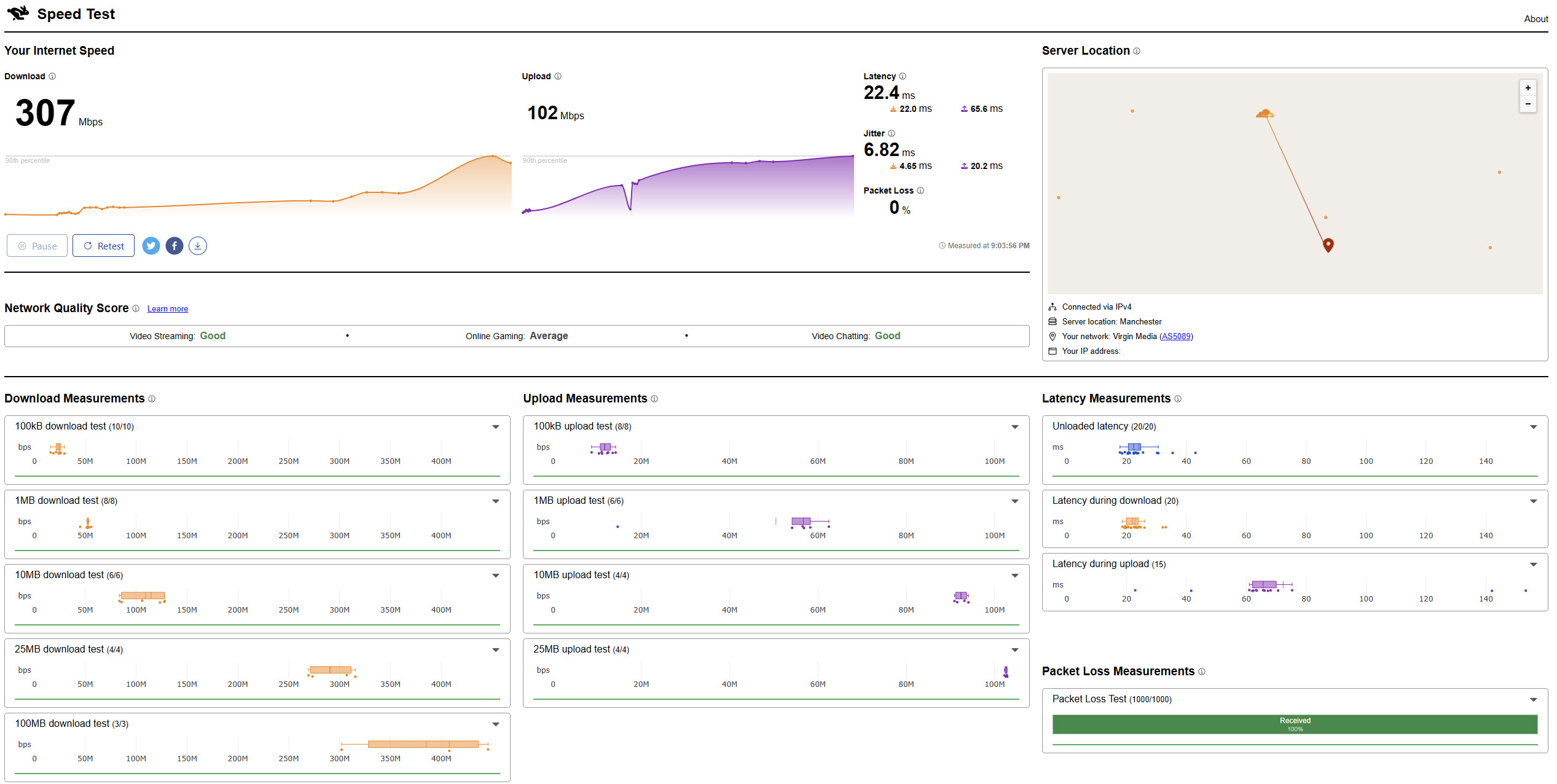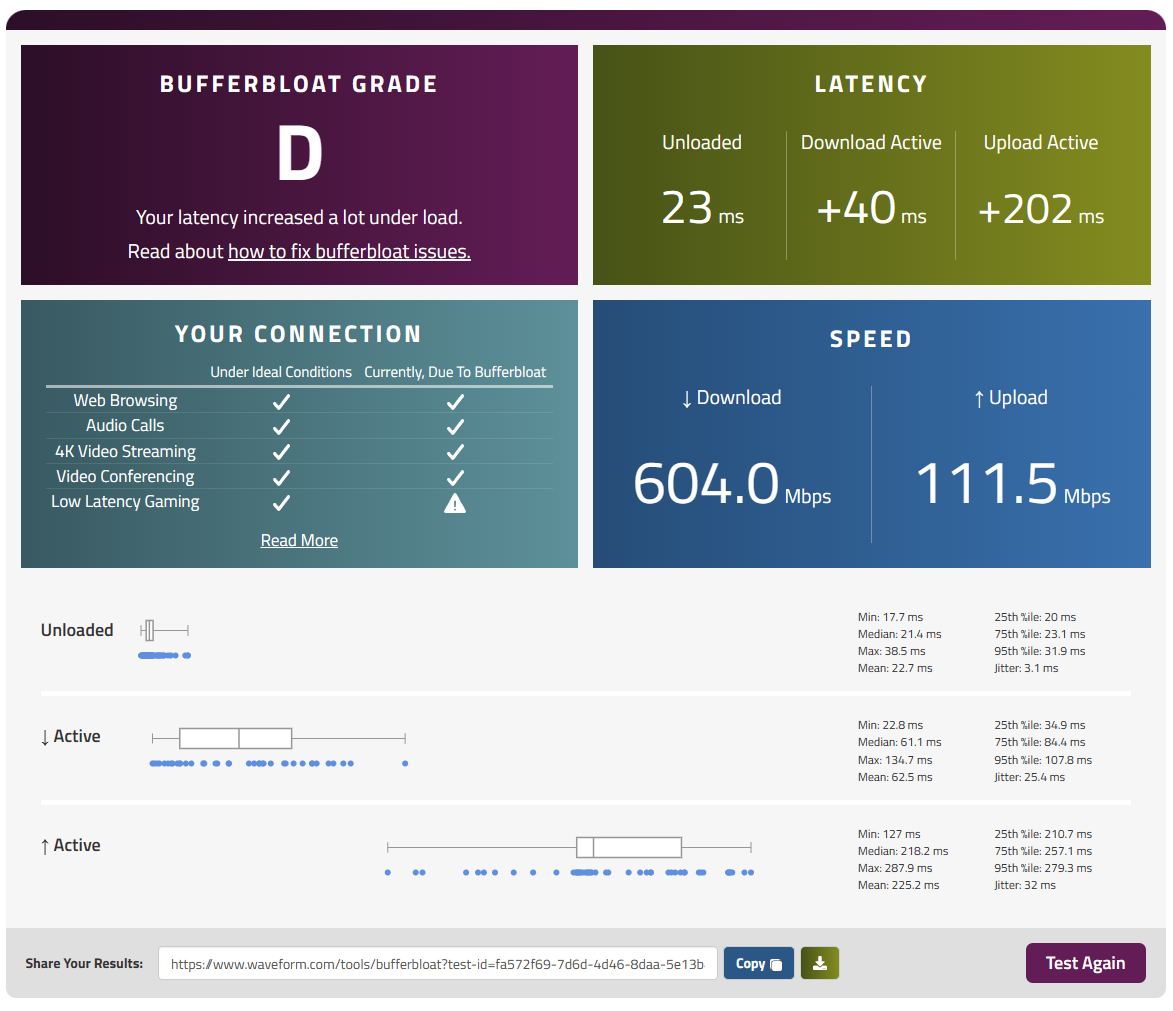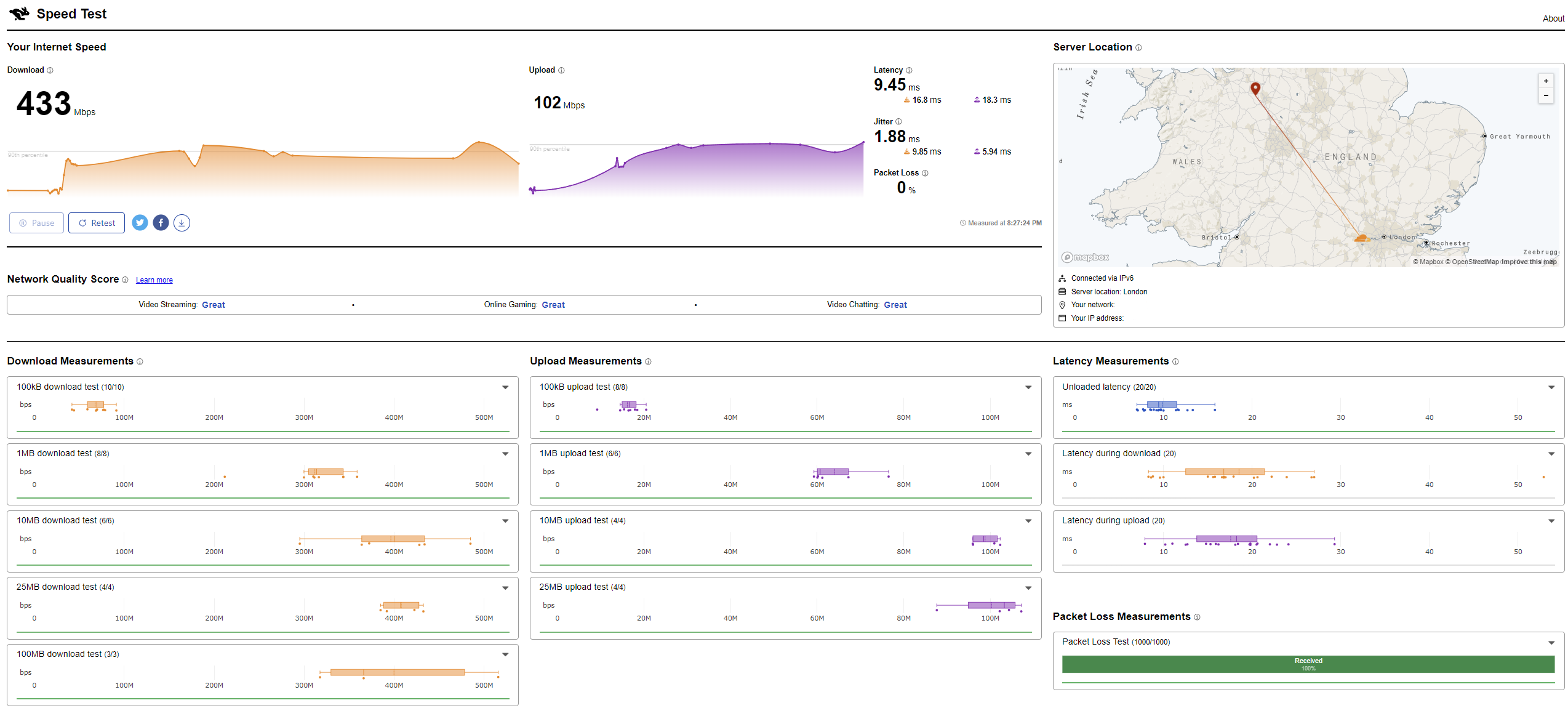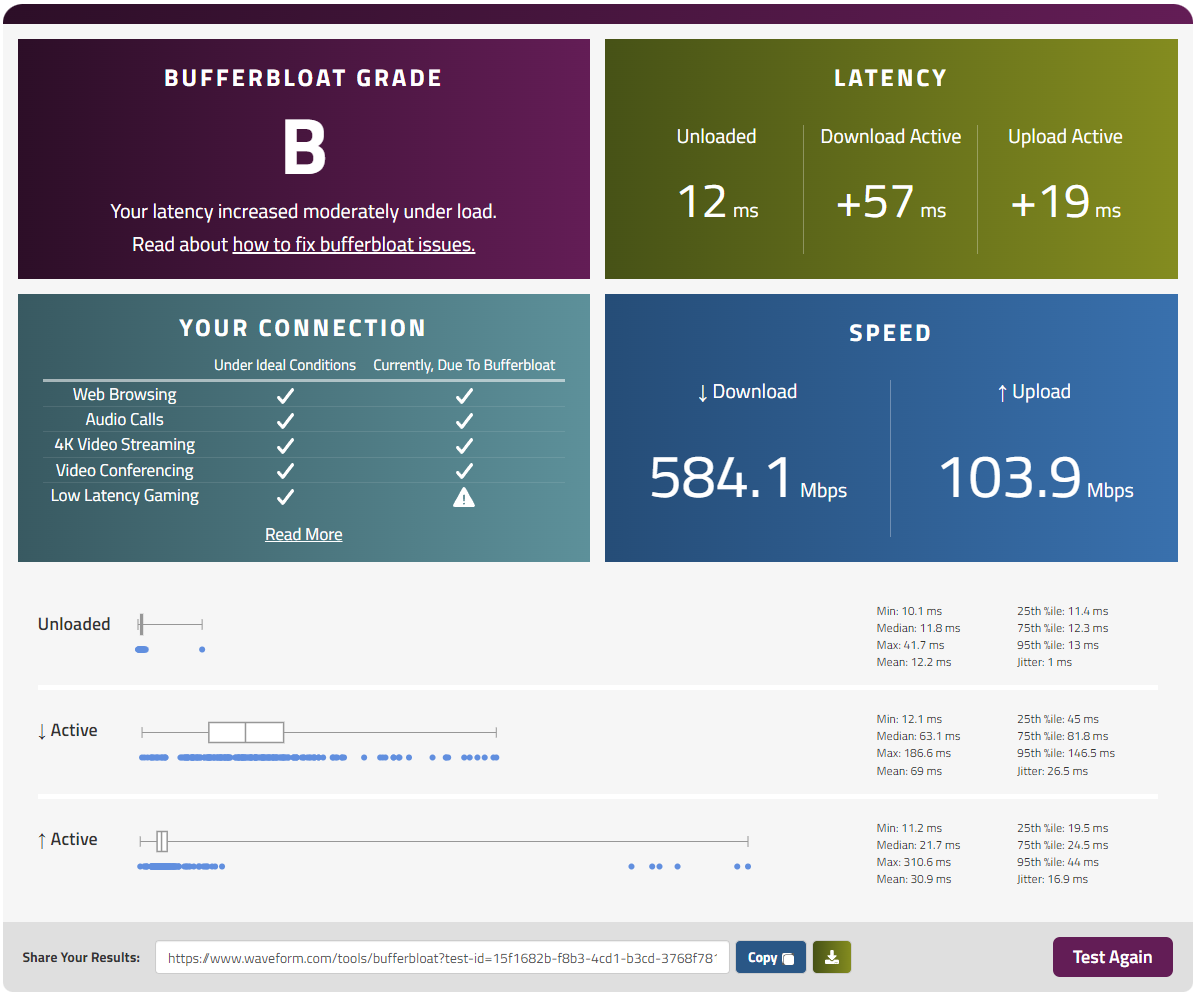Internet Connectivity Latency
In recent years, numerous ISPs (Internet Service Providers) have made substantial investments to improve their services. The key factor driving this transformation is the upgrade of infrastructure, aiming to achieve enhanced reliability, scalability, and increased capacity. However, it's worth noting that only a few infrastructure providers in the UK have been instrumental in delivering superfast internet. The primary players responsible for this advancement are Virgin Media, CityFibre, and Openreach. Notably, Openreach is distinct from BT, as they underwent a split to form two separate entities.
Virgin Media has been actively testing and implementing DOCSIS 3.1 technology in many of its key cities and towns, which involves upgrading their infrastructure. This upgrade enables the provision of impressive download speeds of up to 1Gb (1 Gig) and upload speeds of up to 100Mb. While this level of speed is highly beneficial for downloads, it does come with a drawback in terms of latency, mainly because Virgin Media still relies on coaxial cables for the last mile connection to the properties. It's important to note that Virgin Media serves both business and consumer customers directly. ! Currently, Virgin Media has plans to upgrade its infrastructure by integrating fibre alongside its DOCSIS technology. However, the implementation of this upgrade is still limited and not widespread.
Openreach has achieved significant progress by providing FTTP (Fibre to the Premises), which is sometimes referred to as FTTH (Fibre to the Home), depending on the ISP that serves the consumer within the Openreach infrastructure. Generally, customers can expect download speeds of 1Gb and upload speeds of 100Mb (Business customers can get 220Mb upload).
From a technical standpoint, Openreach has the capability to offer symmetrical 1Gb download and 1Gb upload speeds, but they have not made this option available. This decision is primarily influenced by concerns about contention and safeguarding their primary revenue stream derived from leased lines, which also utilize the same infrastructure but typically cost 10 times more. Openreach directly provides its services to businesses, but not to consumers. Instead, consumers who wish to use Openreach's services would do so through various ISPs, including Plus.net, BT, Sky, TalkTalk, Zen, Aquiss, and several others. These ISPs act as intermediaries, offering Openreach's services to the end consumers.
CityFibre has undertaken a nationwide deployment of FTTP infrastructure, building it from scratch with the implementation of new FEX (Fibre Exchanges). This approach incorporates the best features from various technologies, as the infrastructure is designed from the ground up. Although there are other ISPs that have also pursued similar endeavours, they have done so on much smaller scales and are limited to specific areas in the UK. Therefore, for the purposes of this general topic, those ISPs will be excluded.
CityFibre's services are also available directly to businesses, but not to consumers. Consumers interested in accessing CityFibre's services would need to go through ISPs such as Plus.net, BT, Sky, TalkTalk, Zen, IDNet, among others. These ISPs act as intermediaries, offering CityFibre's services to consumers.
! The list of consumer ISPs mentioned above is subject to change, as it depends on how contracts are renewed or established with other infrastructure providers.
Latency
Latency is the time delay between the sending and receiving of data packets over a network. It is typically measured in milliseconds (ms) and plays a crucial role in various online activities. For activities like streaming movies or downloading files, higher latency is not as noticeable because the data is sent in large chunks and reassembled upon receipt. Faster internet speeds can indeed help with buffering issues in these cases.
However, for real-time activities like video conferencing, online gaming, and voice chat, low latency is vital. A lower latency ensures that the data packets travel quickly with minimal delay, leading to a smoother and more responsive experience. In terms of technology, fibre-optic connections generally have lower latency compared to traditional copper-based connections like FTTC (Fibre to the Cabinet) or Coaxial (DOCSIS). Fibre optic uses light to transmit data, which travels at close to the speed of light, resulting in reduced latency.
On the other hand, copper and coaxial connections might be more susceptible to interference, leading to slightly higher latency in certain situations. Furthermore, the location to the Point of Presence (PoP) and routing practices can also influence latency. If the internet traffic is routed through distant gateways, it may lead to higher latency for users located farther away from those gateways.
To summarize, lower latency is critical for real-time online activities, and fibre-optic connections generally offer better latency performance compared to traditional copper or coaxial connections. However, individual circumstances and infrastructure can also influence latency, so it's essential to consider various factors when assessing the impact of latency on a particular internet connection.
Virgin Media
Some statistics from Reading, Berkshire on Virgin Media 1Gig package, taken around 21:00 on a Sunday.
 Tested with CloudFlare Speedtest
Tested with CloudFlare Speedtest
 Tested with Waveform BufferBloat
Tested with Waveform BufferBloat
Openreach
Some statistics from Reading, Berkshire on Aquiss 1Gb package, taken around 20:30 on a Wednesday.
 Tested with CloudFlare Speedtest
Tested with CloudFlare Speedtest
 Tested with Waveform BufferBloat
Tested with Waveform BufferBloat
CityFibre
!! As of now, I haven't personally tested CityFibre infrastructure, but I plan to gather statistics from a reliable source.
Latency is King
Choosing FTTP (Fibre to the Premises) for better latency can offer several advantages over other broadband technologies like DSL or cable. Here are some reasons why FTTP is a preferred choice when low latency is a priority:
- Speed of Light: Fibre-optic cables, used in FTTP, transmit data using light pulses. Light travels at incredibly high speeds, almost at the speed of light in a vacuum. This means data can traverse the fibre-optic cables with minimal delay, leading to lower latency.
- Direct Connection: FTTP provides a direct connection from the user's premises to the fibre exchange they are accessing. There are fewer intermediary points, which reduces the chances of data packets being delayed or rerouted, resulting in lower latency.
- Symmetrical Upload and Download Speeds (subject to infrastructure provider): FTTP often offers symmetrical upload and download speeds, which means data can be sent and received at the same high speed. This symmetrical connection is beneficial for activities that require real-time data exchange, like video conferencing or online gaming.
- Low Interference: Fibre-optic cables are not susceptible to electromagnetic interference or noise, unlike copper-based cables used in DSL or cable connections. This lack of interference ensures a more stable and reliable connection, contributing to lower latency.
- Scalability: Fibre-optic networks have high bandwidth capacity and can handle large amounts of data traffic without significant latency issues. As internet usage and demands grow, FTTP networks can easily scale to accommodate higher bandwidth requirements.
- Future-Proofing: FTTP is considered a future-proof technology, as it provides a robust foundation for meeting the increasing demands of modern internet applications. By choosing FTTP, you invest in a long-term solution that will likely support your connectivity needs for years to come.
While FTTP generally provides better latency compared to other technologies, it's essential to consider factors such as the quality of the FTTP infrastructure, the distance to the nearest fibre exchange, and the ISP's network management practices. In some cases, factors beyond the technology itself can influence latency, so it's essential to choose a reliable ISP and consider the specific network conditions in your area.
Note
Openreach, Virgin Media, and CityFibre are all considered infrastructure providers in the context of internet and telecommunication services.
Openreach, is a major telecommunications company that provides various services. They operate a significant portion of the UK's telecommunications infrastructure, including telephone exchanges, fibre-optic networks, and other critical communication infrastructure.
Virgin Media: Virgin Media is a broadband and cable TV provider in the UK. They operate their own network infrastructure, known as the Virgin Media Network, which consists of coaxial and fibre-optic cables. They provide high-speed internet, television, and phone services to residential and business customers.
CityFibre: CityFibre is a company that focuses on building and operating full-fibre infrastructure across cities in the UK. They deploy fibre-optic networks, referred to as FTTP (Fibre to the Premises) or FTTH (Fibre to the Home), providing ultrafast and reliable internet connectivity to residential and business areas.
All three companies play vital roles as infrastructure providers in the telecommunications industry, with each contributing to the development and expansion of high-speed internet connectivity in the UK.